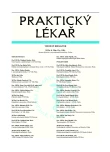Current news in occupational preventive health care services
Authors:
K. Boušová; J. Bubeníčková
Authors‘ workplace:
Klinika nemocí z povolání
; Přednosta: doc. MUDr. Jiří Chaloupka, CSc.
; Lékařská fakulta UK a Fakultní nemocnice v Hradci Králové
Published in:
Prakt. Lék. 2009; 89(8): 411-414
Category:
Editorial
Overview
The provision of occupational health care services is a complex activity made up of performing preventive occupational health care examinations and drawing medical opinion to working ability, investigation and assessing of occupational diseases, working conditions supervision and skilled consulting service. At present, the Department of Occupational Health at the University Hospital in Hradec Králové performs the occupational health care services for more than 120 employers in the Hradec Králové region and partly in the Pardubice region. The organisation and execution of preventive medical examinations and diagnosis abides by the rules embodied in the contract, by valid legislation and by decision of protection of public health body for particular workplaces, professions and work hazards.
The spectrum of managed workplaces and employment is very wide:
from industrial and agricultural companies, educational and health care institutions to the laboratory, research and other work places. In this article, the attention is paid to questions of initial, exceptional and follow-up preventive examinations. An example of cooperation in the area of the occupational health care services provided for employees by a foreign company, which deals with the production of part for the automobile industry, is outlined. In particular, this deals with employees on the assembly line who are at risk of local muscle overloading of upper extremities.
The diseases resulted most often from this risk factor are carpal tunnel syndrome, epicondylitis humeri, tendinitis in the area of forearm and hand, arthrosis in the area of wrist and hands, trigger fingers.
Key words:
occupational health care, preventive medical examinations, occupational diseases, risk of local muscle overloading.
Sources
1. Brhel, P. a kol. Pracovní lékařství – základy primární pracovnělékařské péče. Brno: NCO NZO, 2005. 338 s. ISBN 80-7013-414-3.
2. Buchancová, J. a kol. Pracovné lekárstvo a toxikológia. Martin: Osveta, 2003, 1133 s. ISBN 80-8063-113-1.
3. Kuklová, D., Šubrt, B. Povinnosti zaměstnavatele v oblasti zdravotní péče o zaměstnance. Olomouc: Nakl. ANAG 2002, 351 s., ISBN: 80-7263-127-6.
4. Tučková, A. Sociálně-právní a zdravotní aspekty ochrany a podpory zdraví při práci. Čes. prac. lék., 2007, 8, 4, s. 167-172.
5. Nařízení vlády č. 361/2007 Sb., kterým se stanoví podmínky ochrany zdraví při práci.
6. Směrnice MZ č. 49/1967 Věstníku MZ ČSR.
7. Vyhláška č. 385/2006 Sb. o zdravotnické dokumentaci, v platném znění.
8. Zákon č. 258/2000 Sb. o ochraně veřejného zdraví, v platném znění.
9. Zákon č. 262/2006 Sb., Zákoník práce, v platném znění.
Labels
General practitioner for children and adolescents General practitioner for adultsArticle was published in
General Practitioner

2009 Issue 8
- Metamizole vs. Tramadol in Postoperative Analgesia
- Metamizole at a Glance and in Practice – Effective Non-Opioid Analgesic for All Ages
- Memantine Eases Daily Life for Patients and Caregivers
- Memantine in Dementia Therapy – Current Findings and Possible Future Applications
- What Effect Can Be Expected from Limosilactobacillus reuteri in Mucositis and Peri-Implantitis?
Most read in this issue
- The calcium score: helper or a bad counsellor in diagnostics of chest pain suspected of coronary origin
- Prostate cancer in the age of the da Vinci robotic radical prostatectomy
- Incidence of pulmonary embolism in females aged 15–25 years in relation to oral contraception use (Results of a five-year study)
- Prevention of venous thrombosis (phlebothromboprophylaxis) in clinical practice
